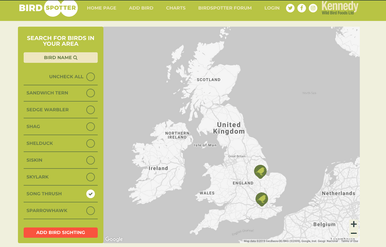Kennedy Wild Bird Food guide to the Fieldfare
Although you may not have heard of the fieldfare, it's likely that you've spotted one of these lovely birds during the winter months, particularly if you live in the countryside. If you'd like to find out more take a look at our guide below!What does a fieldfare look like?
 Fieldfares are a type of thrush, but are larger and more colourful birds than you may expect from the thrush family. You'll be able to spot them from their yellow-orange beaks and throats, brown wings and black and white bellies. Identification is relatively easy as the male, female and juvenile all look similar.
If you're keeping an eye out, look for their very upright posture, and determined, purposeful hops.
Fieldfares are a type of thrush, but are larger and more colourful birds than you may expect from the thrush family. You'll be able to spot them from their yellow-orange beaks and throats, brown wings and black and white bellies. Identification is relatively easy as the male, female and juvenile all look similar.
If you're keeping an eye out, look for their very upright posture, and determined, purposeful hops.

